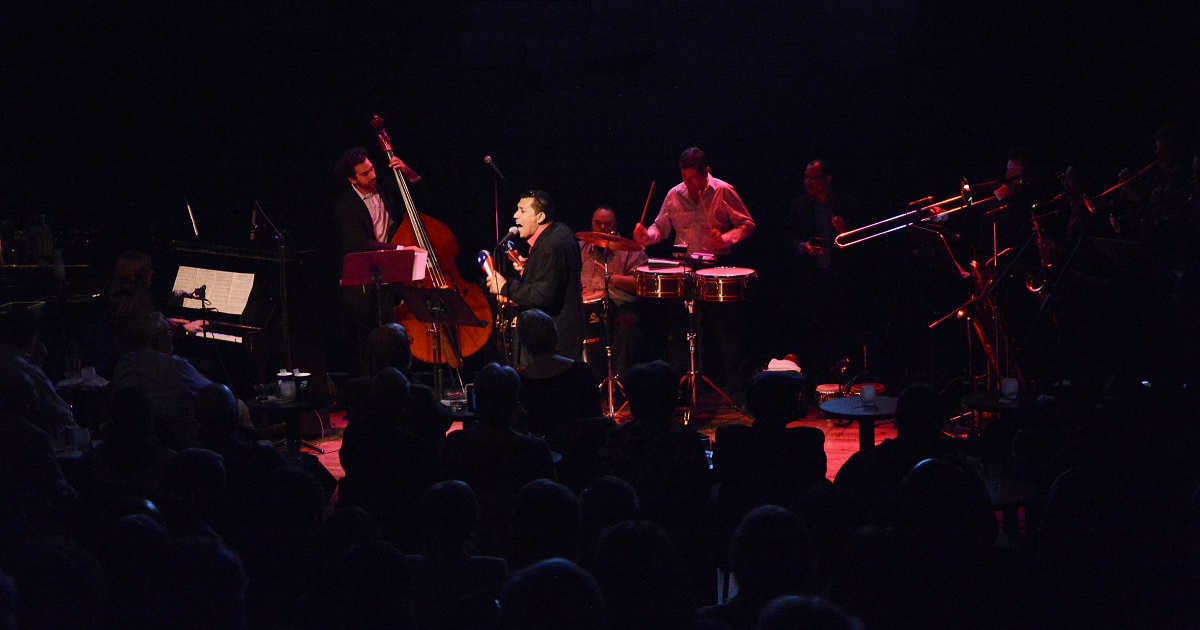
Latin Jazz is happy music, a language unto itself
If you’re bored with that “four on the floor” basic beat and want to feel some syncopation in your bones, you’re ready for some Latin Jazz, from the JAZZ ROOM this month.
When you compare European and African music, each approaches music uniquely. The western world keeps rhythms fairly simple, and contributed harmony to music, with instruments such as the trumpet, guitar, and piano. The African approach relies on the intricacies of rhythm, not based on a pulse but rather on complex patterns. Also interestingly, American jazz is consistent with European music in that the rhythm is given by the thump thump of the bass and bass drum. Whereas Latin music uses higher percussive instruments like the clave to lead the rhythmic patterns. So our ear gets to hear it differently than we are used to.
Each country, and often town, has its own unique rhythms and often even instruments. Puerto Rico has the bongos, Dominican Republic as the tambora. A lot of these instruments are so ancient, some of them have their roots in Africa. Its no accident that the drums in Africa speak. They were originally used to transmit messages and tell stories. So while the language is lost they are the DNA of the culture.
Cuban music is built on dance. It’s happy music. They don’t do songs of disaster and sadness; they’d rather sing about the funny chicken in the backyard.
The original Latin jazz was born in the 1950s by combining jazz standards with a Latin rhythm. At that time, the Bronx was a hotbed of music. A lot of musicians, actors, and actresses are from the Bronx. At one time, there were 65 Latin night clubs in one borough.
The Mambo would be playing at a club just down the street where the jazz cats would be hanging out. After the jazz cats were finished with their gig, they would head over to the Palladium to learn rhythm, and the Latin band would go over to the jazz club to learn harmony. Segregation was around, but the Palladium was diverse – Latin, black, Jewish – nobody was looking at the color of your skin.
What to look forward to this month in THE JAZZ ROOM
Orquesta K’Che plans to give us a taste of several styles, from Latin Jazz, to Afro-Cuban bolero, some rumba, and perhaps ending with a few “descargas” (literally means let loose) which is basically a jam session.
Instruments to keep your eyes out for:
Las claves are the actual wooden sticks used in rhumba, and is an instrument that often pulls all Latin and Cuban music together. The clave is also the word describing the typical rhythmic pattern. That word means key in Spanish, as in the key of G.
The Conga are probably the most iconic Cuban instrument. Musicologists trade it to a Congo drum made of hollowed out tree trunks with pegs, ropes, and skins tacked on the heading. It evolved in Cuba with metal hardware to create tension and expanded from time keeping to a virtuosic instrument.
Cajones do not refer to the slang term we use for guts. From Peru, “Caj” means box, and the “ones” ending means big. So, this is a cool big box with amazing sound.
Saturday Night Live’s use of cowbell isn’t too off-base. This ubiquitous Cuban sound was used in carnival parades and when big bands play mambo because they are loud and can project.
The bongos, two small drums held together by a piece of wood, have an iconic sound. There are certain sounds you don’t know who artist or song is, you hear this and you know this is Latin and Cuban music, like electric guitar is to rock ‘n roll.